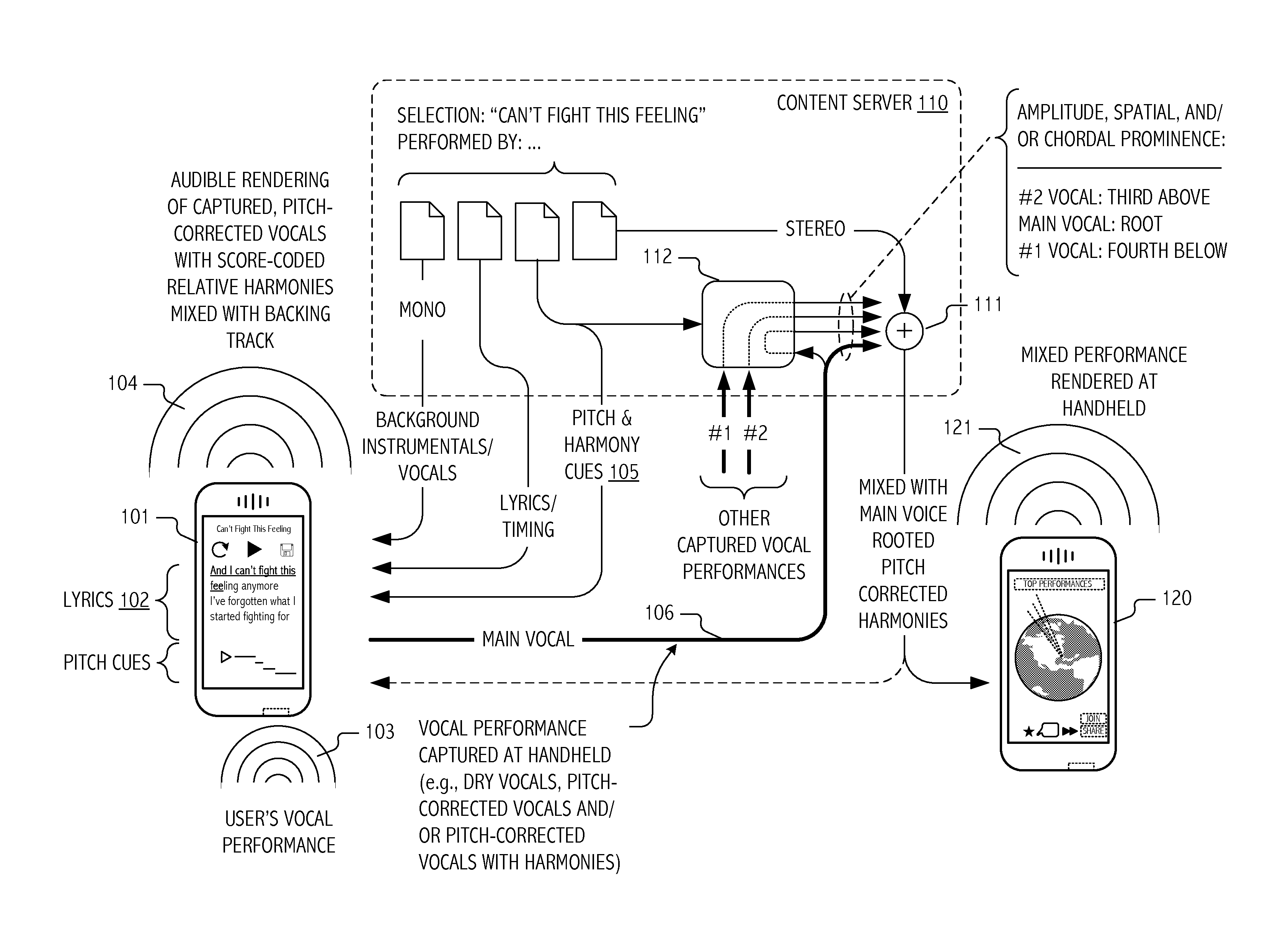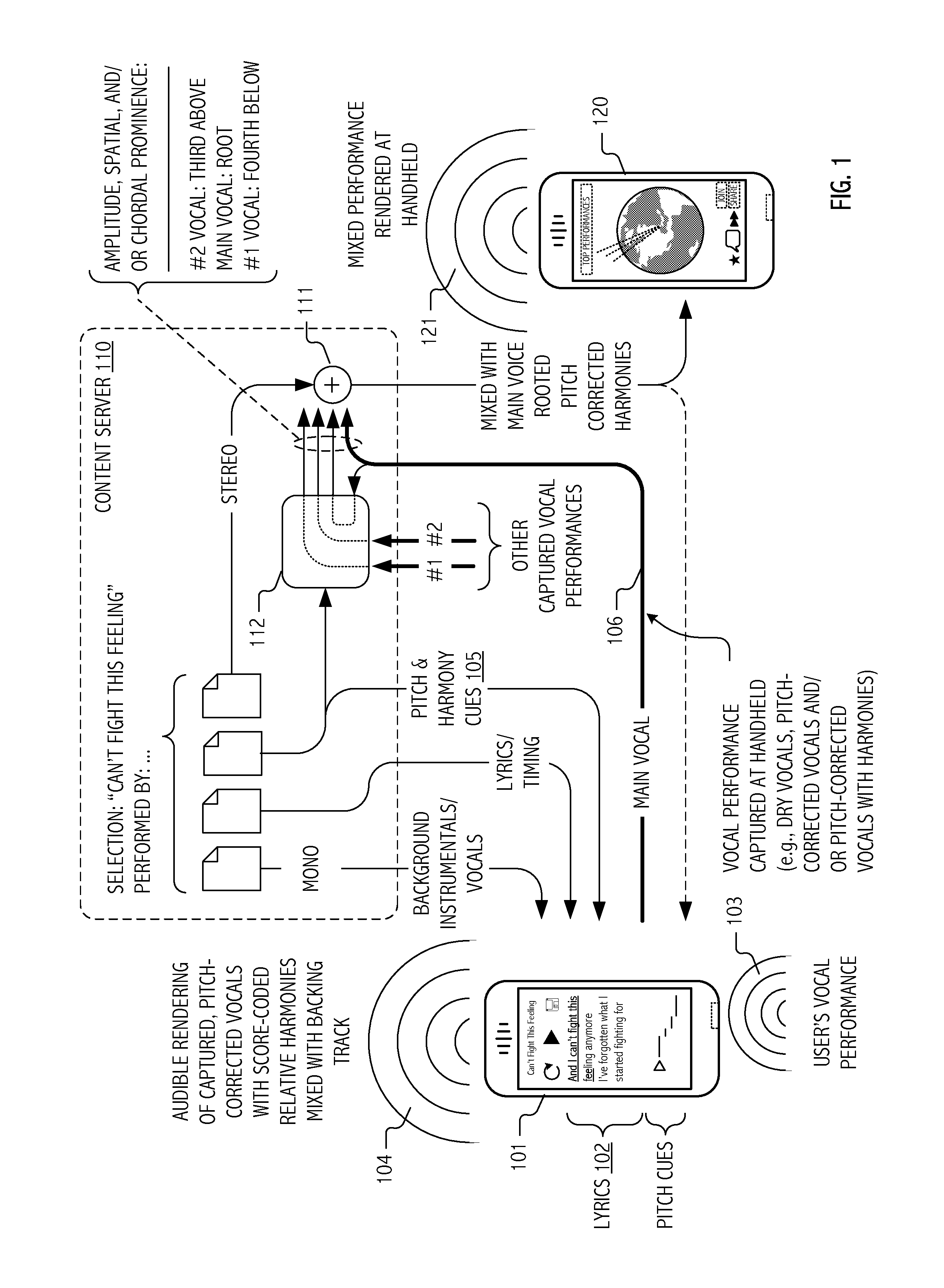Pitch-correction of vocal performance in accord with score-coded harmonies
a vocal performance and score-coded technology, applied in the field of vocal performance capture and/or processing, can solve the problems of significant practical challenges, limited acoustic bandwidth and power, etc., and achieve the effect of facilitating vocalist-centric pitch shifting, facilitating animation or display artifacts, and facilitating efficient encoding and communication
- Summary
- Abstract
- Description
- Claims
- Application Information
AI Technical Summary
Benefits of technology
Problems solved by technology
Method used
Image
Examples
Embodiment Construction
[0126]While the invention(s) is (are) described with reference to various embodiments, it will be understood that these embodiments are illustrative and that the scope of the invention(s) is not limited to them. Many variations, modifications, additions, and improvements are possible. For example, while pitch correction vocal performances captured in accord with a karaoke-style interface have been described, other variations will be appreciated. Furthermore, while certain illustrative signal processing techniques have been described in the context of certain illustrative applications, persons of ordinary skill in the art will recognize that it is straightforward to modify the described techniques to accommodate other suitable signal processing techniques and effects.
[0127]Embodiments in accordance with the present invention may take the form of, and / or be provided as, a computer program product encoded in a machine-readable medium as instruction sequences and other functional constr...
PUM
 Login to View More
Login to View More Abstract
Description
Claims
Application Information
 Login to View More
Login to View More - R&D
- Intellectual Property
- Life Sciences
- Materials
- Tech Scout
- Unparalleled Data Quality
- Higher Quality Content
- 60% Fewer Hallucinations
Browse by: Latest US Patents, China's latest patents, Technical Efficacy Thesaurus, Application Domain, Technology Topic, Popular Technical Reports.
© 2025 PatSnap. All rights reserved.Legal|Privacy policy|Modern Slavery Act Transparency Statement|Sitemap|About US| Contact US: help@patsnap.com



